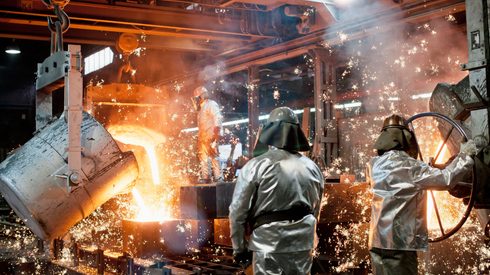The uncertainty surrounding the election has had a chilling effect on major projects while developers wait to get a read on the future regulatory environment. Once a clear path is visible, steel should begin to flow to major projects – particularly government-funded infrastructure projects – that had been just sitting on the shelf, according to Fastmarkets research.
“In 2023, the overall economy overcame an impending recession. Entering 2024, headwinds remain from supply chain and skilled labor market uncertainty and high energy and input prices,” Felix Bello, Fastmarkets US steel analyst, said. “But it is the doldrums’ uncertainty that the presidential election brings for 2024 that may make 2025 the year for steady tail winds.”
Fastmarkets publishes a range of construction-focused steel prices, from its legacy domestic rebar offering to upcoming new import prices for 55% Al-Zn coated steel sheet, commonly used in roofing. Fastmarkets has been publishing the domestic Galvalume equivalent since June 2019. The new 55% Al-Zn coated import prices will go live on April 16.
Gains ahead for construction in 2024
The American Institute of Architects projects construction sector spending in 2024 to increase by 6% overall, with a 3% increase for commercial, 15% for industrial, and 4% for institutional buildings, Bello said. It’s billings index stood at 46.2 in January, however, “indicating a tepid decline in business conditions,” he said.
“As such, it may be a further indicator of normalizing demand that may give impetus to rising activity once inflation and interest rates recede, and investment billions from the Inflation Reduction Act and the CHIPS and Science Act flow through the economy,” he said.
A steel trader echoed the sentiment.
“Overall, election years can introduce uncertainty and fluctuations in demand for steel,” they said. “The specific impact will depend on the interplay of various factors including policy decisions, economic conditions and global market dynamics. Historically, as I remember, during the presidential elections’ start to the actual election day, construction normally slows down the growth rate.”
Beyond policy, the trader added that elections tend to cloud consumer confidence. Clarity following the election usually entails an uptick in sentiment, they said.
“Positive sentiment may lead to increased investment and construction activity, driving up demand for steel. Conversely, uncertainty or negative sentiment may result in reduced spending and lower demand for steel products,” they said.
This week, Fastmarkets has launched an import component to our domestic Galvalume price. Talk to us today to find out more.






